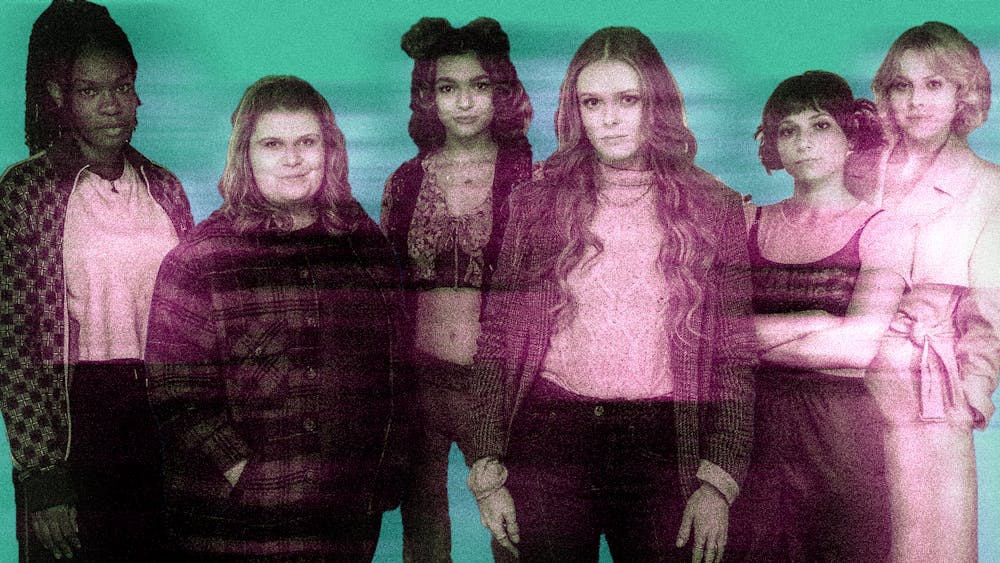My childhood, along with that of many other young girls, was given an extra dash of magic by the 30 minutes I’d spend each week watching the animated fairies of the Winx Club sparkle across my TV. Naturally, when I heard Netflix was releasing a live–action reboot in January 2021, I parked myself in front of my computer for six hours to binge–watch their version of the series. Although the reboot may not have gotten everything right, Netflix took an admirable first stab at a concept I’d love to see continued—creating mature versions of children’s series to parallel the original audience’s age and growth.
When I sat down to watch, I was immediately shocked by the aesthetics on screen. While the original Winx Club was all bright colors and pizzazz, Fate: A Winx Saga utilized earthier tones and a more somber mood. The characters were portrayed as stereotypical teenagers at boarding school without real adult supervision—smoking, drinking, swearing, flirting—embracing these adult themes from the first episode.
As an OG fan, my attention was first drawn to the casting. I felt as if I didn’t recognize many of the characters, even Googling a picture of the animated series to see if my memory had grown foggy in the eight years it had been since I watched. However, I found that my confusion was justified. Bloom, a fire fairy, had distinctive red hair—and that’s about the only characteristic that was a constant between the original and reboot. The Latina and Asian fairies had been completely whitewashed, with no mention of their heritage—Flora, inspired by Jennifer Lopez, was now called Terra, and Musa’s powers changed from music to the mind.
There’s also no mention of Tecna, a technology fairy. However, after backlash from annoyed fans, Netflix is integrating Flora’s character into season two, released in September 2022. Additionally, the company did take creative liberties in the way of positive representation by including a plus–size character for the first time. The body types portrayed in the animated series were all extremely unrealistic, as the size of the characters' waists was half that of their hips. In a society constantly pushing the narrative that it’s required for teen girls to be paper thin, this change was definitely necessary and an important step in body inclusivity.
Additionally, a defining part of the series was the character’s distinctive outfits, each corresponding with their individual powers. The new outfits are completely drab, lacking any bright colors or unique features that could be associated with each fairy. Although real–life teenagers don’t walk around in the same knee–high boots, crop tops, and mini skirts every day, a bit more personality from the outfits would have been welcome, as Netflix’s costumes weren’t exactly fashion–forward—Aisha’s ankle–length blue and green plaid skirt is definitely not trending right now.
If you’re able to look past the casting and style issues, the darker and more sinister plot had me holding my breath throughout. Alfea, the boarding school for fairy training where the show is set, was plagued by “Burned Ones,” powerful mythical creatures out to attack the students and staff. The disturbing appearance of the Burned Ones added to the eerie vibes of the series, with disfigured bodies, glowing red eyes, and ear–splitting shrieks that pierced the air as they attacked their victims. As the show no longer had to cast tame villains to cater to the low fright tolerance of young children, the ghastly and frightening creatures definitely added another level of entertainment to the show. Stronger enemies led to stronger displays of power from the fairies, allowing them to access the full extent of their magic in epic fight and training scenes. Bloom drew energy from the land to defeat the Burned Ones in the season finale, growing a pair of fiery wings out of her back and shooting columns of flames at them to defend Alfea’s grounds.
Even though Netflix’s reboot wasn’t executed with complete success, I did enjoy watching the more mature versions of characters I loved in childhood as a more mature version of myself. There was something distinctly comforting about seeing them begin to find themselves in the same situations that I have—going to their first parties, talking to boys, navigating troubling friendship dynamics—all with the additional twist of learning how to control their magical abilities and defeat the evil Burned Ones throughout the season. The entertainment industry should continue to update animated children’s shows to deal with more adult themes in the future—there’s an array of shows that dominated primetime networks in the early 2000s to choose from.

